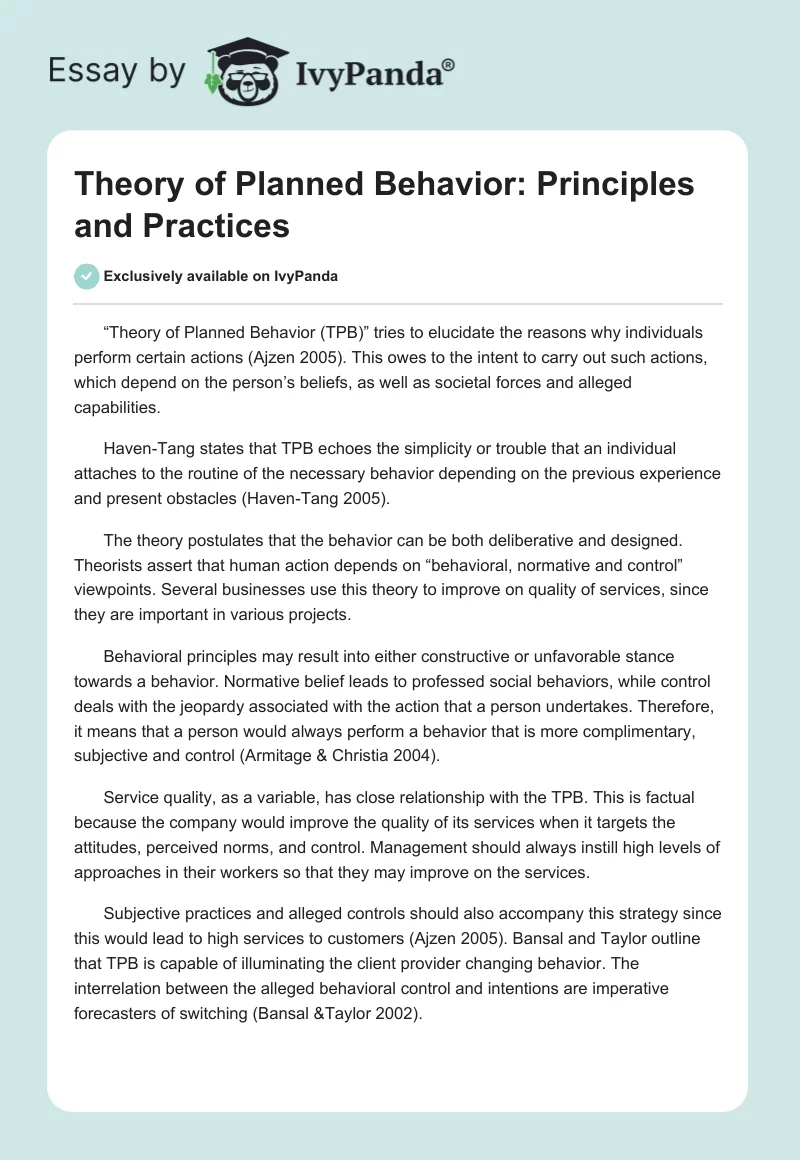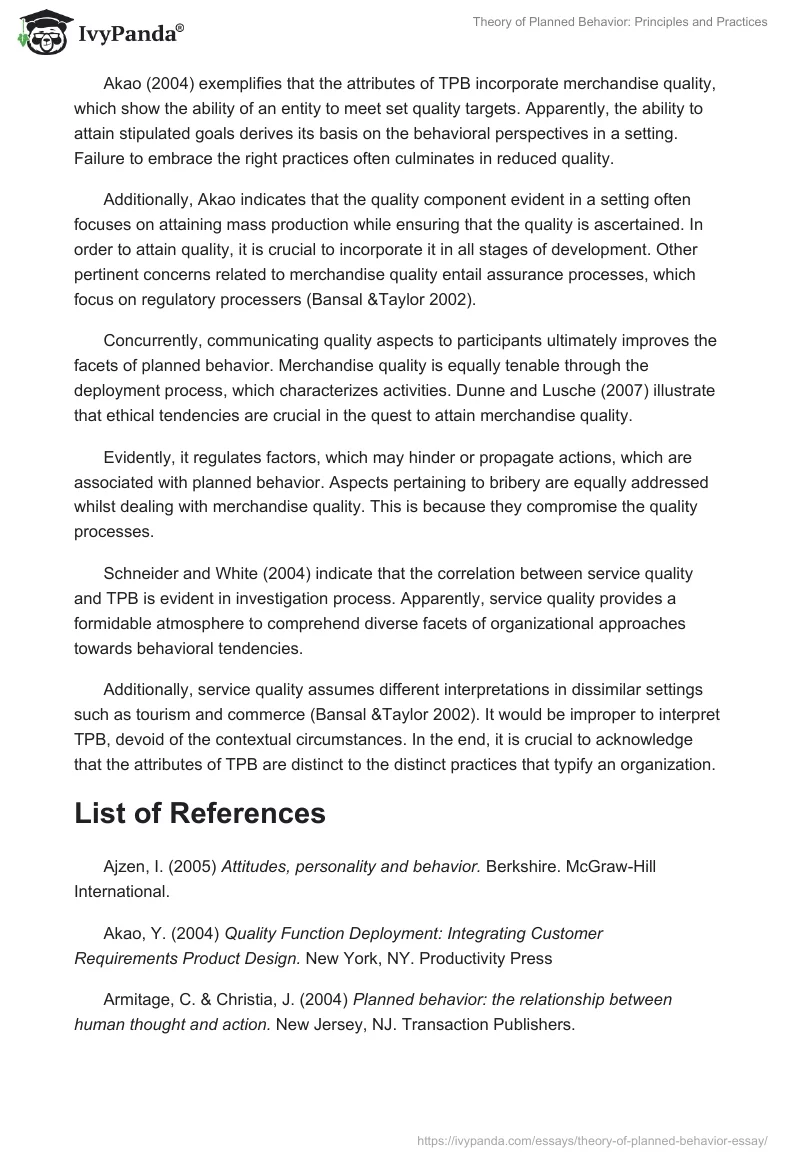“Theory of Planned Behavior (TPB)” tries to elucidate the reasons why individuals perform certain actions (Ajzen 2005). This owes to the intent to carry out such actions, which depend on the person’s beliefs, as well as societal forces and alleged capabilities.
Haven-Tang states that TPB echoes the simplicity or trouble that an individual attaches to the routine of the necessary behavior depending on the previous experience and present obstacles (Haven-Tang 2005).
The theory postulates that the behavior can be both deliberative and designed. Theorists assert that human action depends on “behavioral, normative and control” viewpoints. Several businesses use this theory to improve on quality of services, since they are important in various projects.
Behavioral principles may result into either constructive or unfavorable stance towards a behavior. Normative belief leads to professed social behaviors, while control deals with the jeopardy associated with the action that a person undertakes. Therefore, it means that a person would always perform a behavior that is more complimentary, subjective and control (Armitage & Christia 2004).
Service quality, as a variable, has close relationship with the TPB. This is factual because the company would improve the quality of its services when it targets the attitudes, perceived norms, and control. Management should always instill high levels of approaches in their workers so that they may improve on the services.
Subjective practices and alleged controls should also accompany this strategy since this would lead to high services to customers (Ajzen 2005). Bansal and Taylor outline that TPB is capable of illuminating the client provider changing behavior. The interrelation between the alleged behavioral control and intentions are imperative forecasters of switching (Bansal &Taylor 2002).
Akao (2004) exemplifies that the attributes of TPB incorporate merchandise quality, which show the ability of an entity to meet set quality targets. Apparently, the ability to attain stipulated goals derives its basis on the behavioral perspectives in a setting. Failure to embrace the right practices often culminates in reduced quality.
Additionally, Akao indicates that the quality component evident in a setting often focuses on attaining mass production while ensuring that the quality is ascertained. In order to attain quality, it is crucial to incorporate it in all stages of development. Other pertinent concerns related to merchandise quality entail assurance processes, which focus on regulatory processers (Bansal &Taylor 2002).
Concurrently, communicating quality aspects to participants ultimately improves the facets of planned behavior. Merchandise quality is equally tenable through the deployment process, which characterizes activities. Dunne and Lusche (2007) illustrate that ethical tendencies are crucial in the quest to attain merchandise quality.
Evidently, it regulates factors, which may hinder or propagate actions, which are associated with planned behavior. Aspects pertaining to bribery are equally addressed whilst dealing with merchandise quality. This is because they compromise the quality processes.
Schneider and White (2004) indicate that the correlation between service quality and TPB is evident in investigation process. Apparently, service quality provides a formidable atmosphere to comprehend diverse facets of organizational approaches towards behavioral tendencies.
Additionally, service quality assumes different interpretations in dissimilar settings such as tourism and commerce (Bansal &Taylor 2002). It would be improper to interpret TPB, devoid of the contextual circumstances. In the end, it is crucial to acknowledge that the attributes of TPB are distinct to the distinct practices that typify an organization.
List of References
Ajzen, I. (2005) Attitudes, personality and behavior. Berkshire. McGraw-Hill International.
Akao, Y. (2004) Quality Function Deployment: Integrating Customer Requirements Product Design. New York, NY. Productivity Press
Armitage, C. & Christia, J. (2004) Planned behavior: the relationship between human thought and action. New Jersey, NJ. Transaction Publishers.
Bansal, S. & Taylor, F. (2002) Investigating interactive effects in the theory of planned behavior in a service-provider switching context. Psychology and Marketing. 19: 407–425.
Dunne, P. & Lusche, R. (2007) Retailing. Ohio, OH. Cengage
Haven-Tang, C. (2005) Tourism SMEs, service quality, and destination competitiveness. Wallingford. CABI.
Schneider, B. & White, S. (2004) Service quality: research perspectives. California, CA. Sage


